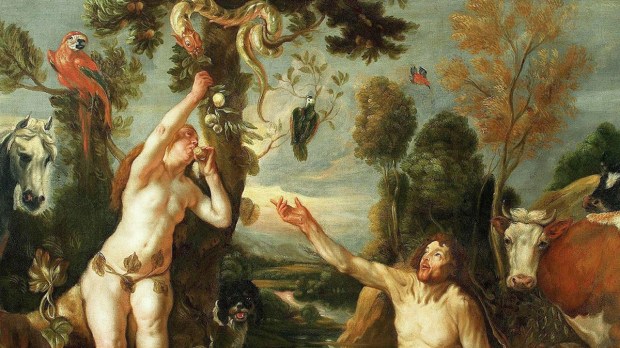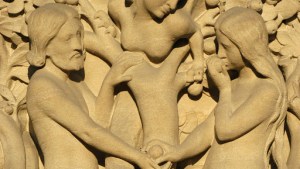Saying the Bible is a challenging book is right and wrong at the same time. True, Scripture is not always easy to read. It demands thoughtful attention, a fair amount of patience, intellectual humility, some previous knowledge of the contexts in which these texts were written, and an adventurous spirit willing to deal with plenty of unexpected oddities. For example, that of the tree of the Knowledge of Good and Evil. Or is it the Tree of Life? Or both?
But the Bible is not a book. It is rather a collection of several separate books, most (if not all) of them made from the interweaving of different, sometimes even clashing sources. It is also the byproduct of the minute and painstaking work of generations and generations of writers, compilers, translators, and editors. It is, in sum, a careful assemblage of texts written, edited, and codified over millennia.
To make matters more complicated, there is not only one Bible. And this is not to say the obvious —namely, that a myriad different translations, some better than others, are available out there. There are literally different Bibles. Jews have one, Protestant Christians have another, and Orthodox Christians and Roman Catholics have yet another one —the biggest of them all, comprising 73 books in total. Sure, all of these Bibles are intimately related to one another, and often overlap. But they ultimately are not the same. That is one of the reasons why biblical scholars, throughout the centuries, have not reached an agreement on a question that, at face value, might seem pretty straightforward: how many trees were there at the center of the Garden of Eden?
Trees of what?
The tree of the knowledge of good and evil, most scholars and translations agree, is one of two very specific trees in the story of the Garden of Eden in Genesis, as told in chapters 2 and 3 —the tree of life being the other one. However, scholars like Mark Makowiecki have argued that the tree of the knowledge of good and evil is just another name for the tree of life.
In his article “Untangled Branches: The Edenic Tree(s) and the Multivocal WAW,” Makowiecki argues that while it seems self-evident (from the text itself) that the Edenic trees are two, Eve’s conflation of these trees during her discussion with the serpent has led some to argue that the trees might, in fact, be one tree with two names. Makowiecki, of course, is not the first one to notice this tension: commentators have been trying to solve it since day one (genesis-ish pun intended). However, his take on the matter is as original as insightful.
Let’s look at Genesis 2:9:
Then the LORD God formed man of dust from the ground, and breathed into his nostrils the breath of life; and man became a living being. And the LORD God planted a garden in Eden, in the east; and there he put the man whom he had formed. And out of the ground the LORD God made to grow every tree that is pleasant to the sight and good for food, and the tree of life in the midst of the garden, and the tree of the knowledge of good and evil.
Makowiecki notes how the regularly repeated “and” (waw, in the original Hebrew) works like a literary device, which conditions the reader to interpret the final waw (“and the tree of the knowledge of good and evil”) as yet another and. That is, the reader assumes that the story is referring to two distinct trees—the tree of life and the tree of the knowledge of good and evil. This assumption is strengthened throughout the text, as we find God himself distinguishing one tree from the other in Genesis 3:22. The text reads:
Then the Lord God said, “See, the man has become like one of us, knowing good and evil; and now, he might reach out his hand and take also from the tree of life, and eat, and live forever.”
However, both trees seem to merge into one in Genesis 3:2-3:
“And the woman said to the serpent, ‘We may eat of the fruit of the trees of the garden; but God said, “You shall not eat of the fruit of the tree which is in the midst of the garden, neither shall you touch it, lest you die”’.
Not “and,” but “that is to say”
Makowiecki explains that, up to this point, the reader has assumed that the tree “in the midst of the garden” is the tree of life, and that the tree forbidden under pain of death is the tree of the knowledge of good and evil. Eve’s statement (that eating from the fruit that is in the midst of the garden would bring about death) distorts this assumption, as she appears to be suddenly conflating both trees into one: “God said, ‘You shall not eat of the fruit of the tree which is in the midst of the garden . . . lest you die.”’ Since the narrator offers no clarification on this point, the reader is left to make sense of it on his own. Makowiecki’s way out of this confusion is as thought-provoking as faithful to the text: there is yet another meaning (let’s say, a “concealed” one) in the final waw (“and”) in Gen 2:9. It is a waw explicativum, an “explanatory and.” In fact, the Hebrew waw “can function explicatively such that it may be interpreted not as ‘and’ but as ‘that is (to say)’.” When considered in this way, the text would read:
And out of the ground the LORD God made to grow every tree that is pleasant to the sight and good for food, and the tree of life in the midst of the garden, that is to say, the tree of the knowledge of good and evil.
When 2:9, 2:16-17, and 3:2-3 are read in its light, all three passages suddenly agree. When the tree of the knowledge of good and evil is considered as another name for the tree of life, the reader concludes that all three passages are referring to one and the same tree. This interpretation is also aligned with yet another possible reading of the name of the tree of good and evil in the original. Whereas the Hebrew “tov wa-ra” literally translates as “good and evil,” the phrase has also been read as an example of a very specific type of figure of speech commonly known as merism. Simply put, a merism is a literary device that joins opposite terms together in order to create a general meaning. The phrase “good and evil” would simply imply, in this case, “everything,” as in “everything in life,” “life itself,” “the whole world.”



